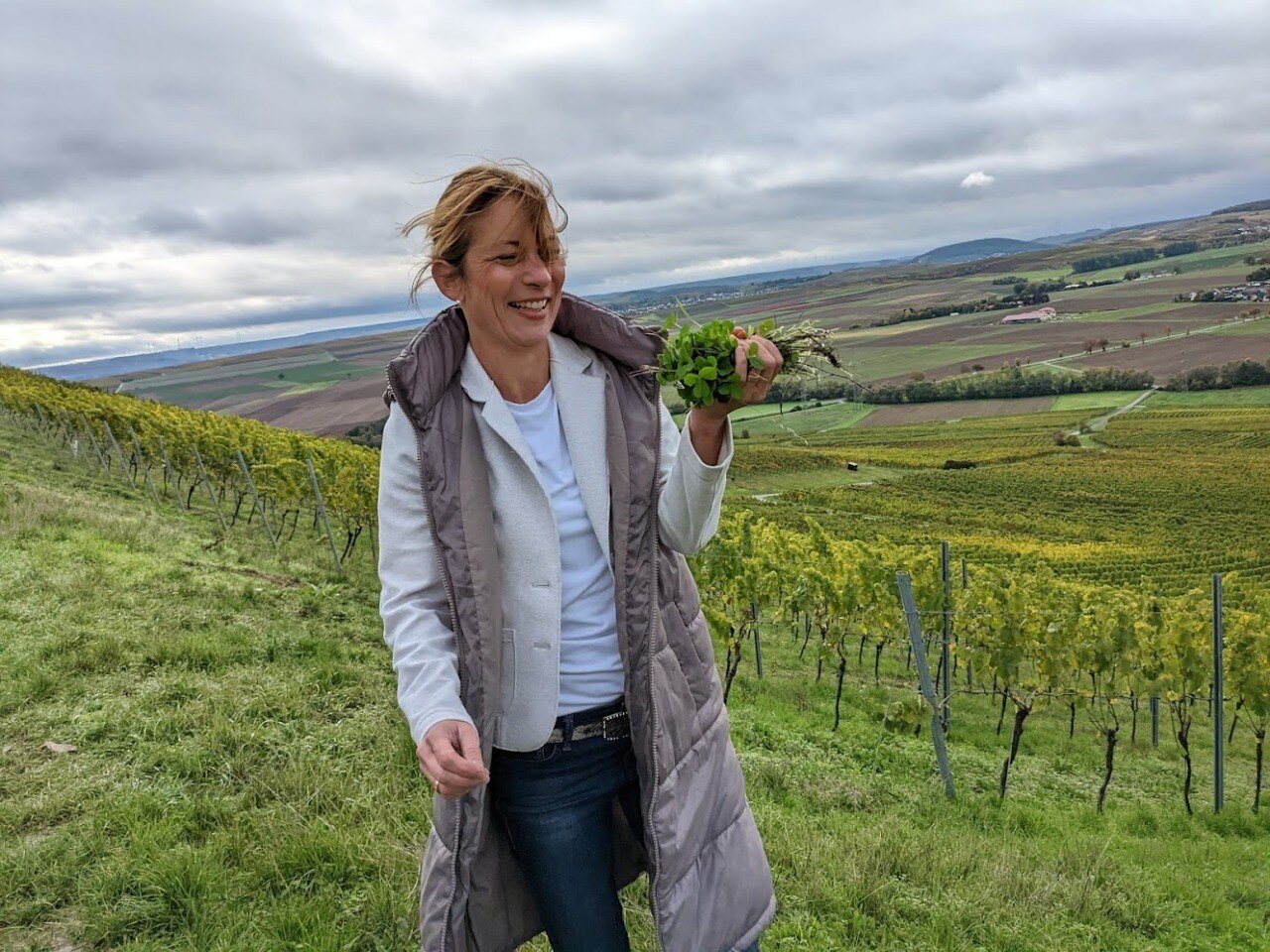Sensational Ratings for Weingut Thörle from Stuart Pigott
Weingut Thörle receives consistently high scores from critics every year, and visitors to the...

“We have the nickname’ das Probiertstub’chen’,” says Britta, “because Nahe is the tasting room of Germany.”
Location: Bosenheim, Nahe, Germany
Hectares: 32, plus an additional 8-hectares on contract
Farming: Certified organic in the EU
People: Martin & Britta Korrell
Website: https://www.korrell.com/en
“We have the nickname’ das Probiertstub’chen’,” says Britta, “because Nahe is the tasting room of Germany.”
“We are always the first in the Nahe to harvest,” says Britta Korrell, then adds, “and always the last.” It takes seven weeks to harvest all of Weingut Korrell’s 32 hectares which stretch 20 kilometers along the Nahe river, from their home village of Bosenheim (near Bad Kreuznach in the lower Nahe to Waldböckelheim in the upper Nahe. Along the way, tributaries, irregular topography, and 400 million years of tumultuous geological activity make Germany’s Nahe difficult for some to pin down. On the one hand, lower Nahe can produce fine Burgunder varieties, and its dry Rieslings can show power and texture. Prädikatswein from middle Nahe villages like Niederhausen is undoubtedly some of Germany’s finest. Then, in the upper Nahe, a Riesling trocken from Schloßböckelheim might be linear, steely, and intense. “We have the nickname’ das Probiertstub’chen’,” says Britta, “because Nahe is the tasting room of Germany.”
Kreuznacher Paradies is where the winery began after WWII. Martin Korrell’s family comes from Spain, where they picked up the Lion crest on all of Karrell’s labels. Martin’s father began in the Paradies in the 1960s, growing grapes and selling mainly to private clients. Martin was still amidst his studies and had just returned from an internship in Australia in 1999 to find his father in a wheelchair after a fall. Martin, age 19, would have to take charge of the harvest. The Korrells own 9.5 hectares of the 20-hectare Paradies, a steep and prominent hill overlooking Bad Kreuznach with limestone, muschelkalk on the upper slopes, and clay in the lower section. Climate, soil, and old vines combine to make Paradies Riesling a wine of deep concentration, fine structure, and layered many times over with flavor. Paradies is Korrell’s jewel among a treasure chest of grand crus.
“Riesling is the first thing for us,” says Britta. Weissburgunder and Spätburgunder are also quite good here with their lower Nahe home base. The focus is on dry wines, and unless you find yourself in a few specific areas in Germany, off-dry or sweet Prädikatsweine are made when vintage conditions allow for it. Martin is a very controlled winemaker and prefers spontaneous fermentation if it starts within the first 30 hours. It helps explain the unusually intricate complexity of the Gutswein (estate) Riesling trocken and the exceptional “von den Ersten Lagen” bottling. I love this wine because it combines three exceptional sites in Schloßböckelheim (including grand cru Felsenberg) with the famous Traiser Rotenfels into a delicate and salty whole. It says something about this wine when it stands out among grand crus like Dellchen, Kirschheck, Klamm, and Paradies, all produced side-by-side in Korrell’s cellar. To know Weingut Korrell is to know the Nahe.
Tech sheets/Shelf talkers/Ratings:
Weingut Korrell Riesling trocken Nahe 2023
Weingut Korrell Riesling trocken Nahe 2022
Weingut Korrell Riesling Von den Ersten Lagen trocken Nahe 2021
Weingut Korrell Riesling Kabinett feinherb Kreuznach Nahe 2024
Weingut Korrell Riesling Kabinett feinherb Kreuznach Nahe 2023
Weingut Korrell Riesling Kabinett feinherb Kreuznach Nahe 2022
Weingut Korrell Riesling Paradies trocken Nahe 2020

Weingut Thörle receives consistently high scores from critics every year, and visitors to the...
.png?width=750&name=Untitled%20design%20(1).png)
“Weingut Thörle presented stunning, pristine 2023 whites, while the 2022 Pinot Noirs are probably...

Know the Zellertal? No? I’m guessing you already know the neighborhood, though. Everything about...